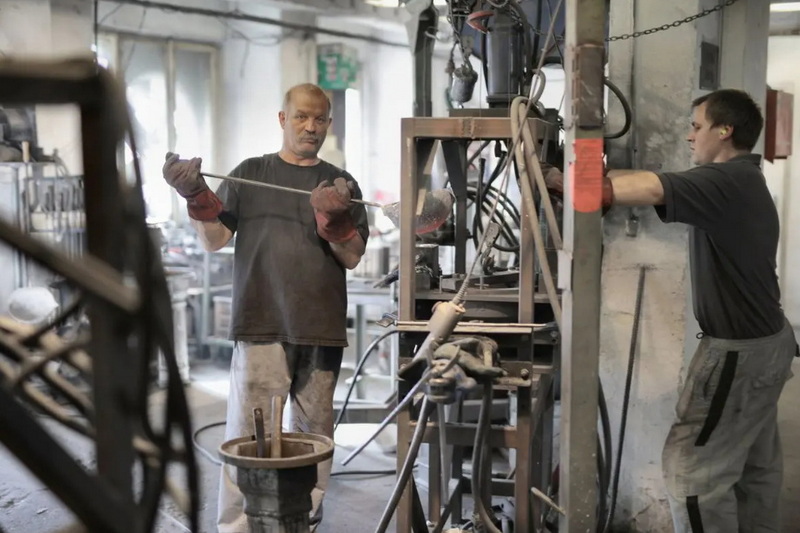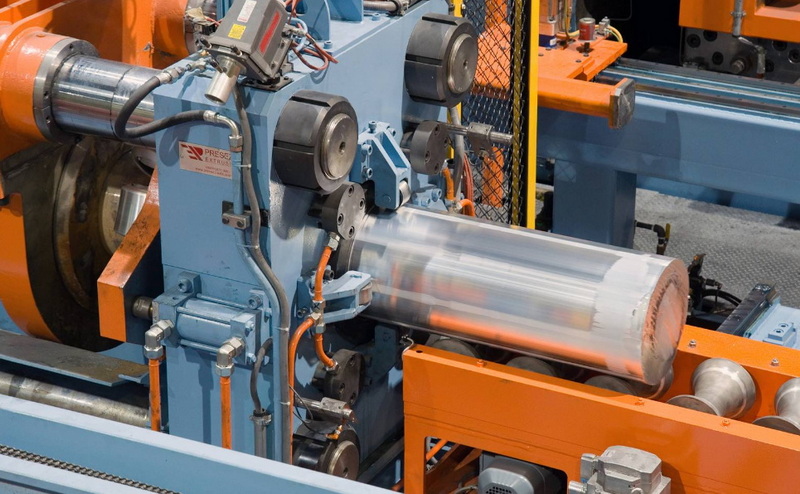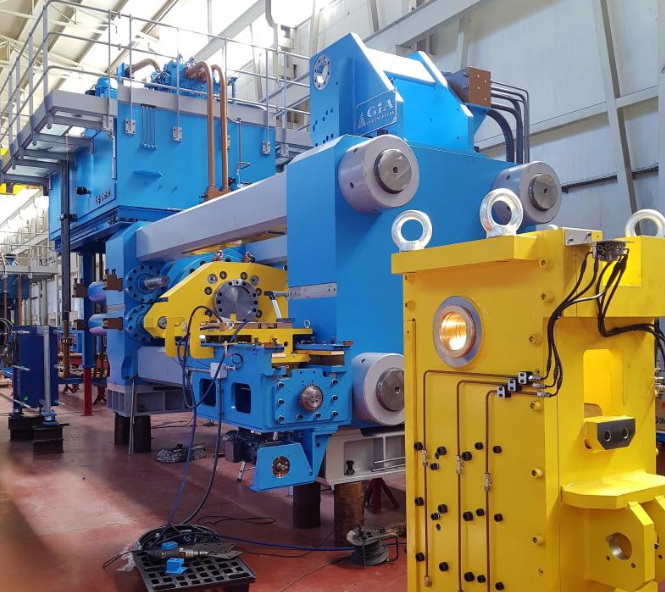Content Menu
● The Preparation Stage
>> Die Preparation and Loading
>> Billet Preparation
● The Extrusion Stage
>> Billet Transfer and Loading
>> Pressure Application
>> Profile Emergence
● The Post-Extrusion Stage
>> Cooling and Quenching
>> Stretching and Straightening
>> Cutting and Finishing
● The Quality Control and Finishing Stage
>> Inspection and Testing
>> Surface Treatment
>> Fabrication and Assembly
● The Packaging and Shipping Stage
● Conclusion
● FAQs
>> 1. What are the main advantages of the aluminum extrusion process?
>> 2. How does the choice of aluminum alloy affect the extrusion process?
>> 3. What are the common challenges in aluminum extrusion and how are they addressed?
>> 4. How has technology improved the aluminum extrusion process in recent years?
>> 5. What are the key factors to consider when designing a product for aluminum extrusion?
● Citations:
Aluminum extrusion is a process by which aluminum alloy material is forced through a die with a specific cross-sectional profile. This complex process involves multiple stages, each playing a crucial role in transforming raw aluminum into precisely shaped profiles. Let's dive deep into the fascinating world of aluminum extrusion and explore the various stages of an aluminum extrusion press line.[1]

The Preparation Stage
Die Preparation and Loading
The journey begins with the preparation of the extrusion die. This crucial component is preheated to temperatures between 450-500 degrees Celsius. This preheating process serves two important purposes: it helps maximize the die's lifespan and ensures even metal flow during extrusion. Once the die reaches the optimal temperature, it is carefully loaded into the extrusion press, ready to shape the aluminum into the desired profile.[1]
Billet Preparation
Simultaneously, an aluminum billet - a solid cylindrical block of aluminum - is prepared for extrusion. The billet is preheated in a specialized oven to temperatures ranging from 400-500 degrees Celsius. This heating process is crucial as it makes the aluminum malleable enough for extrusion without turning it into a molten state.[1]
It's worth noting that the billet is typically cut from a longer aluminum cylinder, much like a log of wood. The preheating temperature is carefully controlled to ensure the aluminum reaches the perfect state for manipulation in the extrusion process.[9]
The Extrusion Stage
Billet Transfer and Loading
Once both the die and billet are properly heated, the billet is transferred to the extrusion press. Due to its high temperature, this transfer is carried out mechanically. Before loading, a lubricant is applied to the billet's exterior. This lubricant serves a dual purpose: it prevents the billet from sticking to the press and also lubricates the extrusion ram, ensuring smooth operation.[9]
Pressure Application
With the billet loaded and lubricated, the extrusion process begins in earnest. A hydraulic ram, capable of exerting enormous pressure - up to 15,000 tons - pushes the heated aluminum billet into the extrusion press container. As the ram applies this immense pressure, the malleable aluminum expands to fill the container walls completely.[9]
As the pressure continues to mount, the softened aluminum is forced through the extrusion die. This die, crafted to exact specifications, shapes the emerging aluminum into the desired profile. The extreme pressure leaves the aluminum with no choice but to conform to the die's shape as it exits.[5]
Profile Emergence
As the alloy material fills the container, it is pressed against the extrusion die. With continual pressure applied, the aluminum has nowhere to go except through the opening(s) in the die. It emerges from the die's opening in the shape of a fully-formed profile. At this point, the extruded material is gripped by a puller, which guides it along the runout table at a speed matching its exit from the press.[1]

The Post-Extrusion Stage
Cooling and Quenching
As the newly formed profile moves along the runout table, it undergoes a critical cooling process known as quenching. This can be achieved either through a water bath or by fans positioned above the table. The quenching process serves to cool the profile uniformly, which is crucial for achieving the desired metallurgical properties and physical performance of the extruded aluminum.[1][5]
Stretching and Straightening
After cooling, the profiles are moved to a stretcher. Here, they undergo an elongation process that serves two purposes: it corrects any distortions that may have occurred during extrusion and ensures perfect alignment. This stretching step is vital for maintaining the straightness and uniformity of the profiles, which is crucial for many applications.[5]
Cutting and Finishing
Once stretched and aligned, the profiles are cut to the desired length. This is typically done in two stages. First, they are sheared to table length for manageability. Then, they are cooled to room temperature to ensure structural stability before being cut to their final dimensions.[5]
It's important to note that aluminum extrusion is not just about shaping the metal. It's a method where aluminum alloy is shaped by pushing it through a mold with a particular cross-sectional design. This process involves a powerful ram that drives the aluminum through the mold, resulting in the material emerging with the desired profile.[5]
The Quality Control and Finishing Stage
Inspection and Testing
After cutting, each profile undergoes rigorous inspection and testing. This stage is crucial to ensure that the extruded profiles meet the required specifications in terms of dimensions, surface finish, and mechanical properties.
Surface Treatment
Depending on the intended application, the extruded profiles may undergo various surface treatments. These can include:
1. Anodizing: An electrochemical process that creates a durable, corrosion-resistant oxide layer on the aluminum surface.
2. Painting: Application of powder or liquid coatings for decorative or protective purposes.
3. Polishing: Mechanical or chemical processes to achieve a smooth, reflective surface.
Fabrication and Assembly
For more complex products, the extruded profiles may undergo additional fabrication processes such as:
1. Machining: Drilling, milling, or turning to create specific features.
2. Bending: Shaping the profiles into curved or angled forms.
3. Welding: Joining multiple profiles to create larger assemblies.
The Packaging and Shipping Stage
The final stage in the aluminum extrusion press line involves packaging and preparing the profiles for shipment. This includes:
1. Wrapping: Protecting the profiles from scratches and environmental factors.
2. Labeling: Ensuring proper identification and traceability.
3. Palletizing: Organizing the profiles for efficient transportation.
Throughout all these stages, the aluminum extrusion process showcases its versatility and efficiency in producing a wide range of profiles. From simple shapes to complex cross-sections, this method allows for the creation of aluminum products that find applications in various industries, from construction and automotive to aerospace and consumer goods.[5]
Conclusion
The aluminum extrusion press line is a marvel of modern manufacturing, combining heat, pressure, and precision engineering to transform raw aluminum into an incredibly diverse range of products. From the initial preparation of the die and billet to the final packaging of the finished profiles, each stage in the process plays a crucial role in ensuring the quality and consistency of the extruded aluminum.
The versatility of this process, coupled with aluminum's inherent properties such as light weight, corrosion resistance, and recyclability, makes aluminum extrusion an invaluable manufacturing method in today's world. As technology continues to advance, we can expect even more innovations in the aluminum extrusion process, further expanding its capabilities and applications.
Understanding the intricacies of each stage in the aluminum extrusion press line not only gives us appreciation for the complexity of the process but also helps in optimizing production, improving quality, and developing new applications for extruded aluminum profiles.

FAQs
1. What are the main advantages of the aluminum extrusion process?
The aluminum extrusion process offers several key advantages:
1. Versatility: It allows for the creation of complex cross-sectional shapes that would be difficult or impossible to achieve with other manufacturing methods.
2. Cost-effectiveness: For medium to high volume production, extrusion can be more economical than other processes like machining or casting.
3. Strength-to-weight ratio: Extruded aluminum profiles offer excellent strength while remaining lightweight, making them ideal for many applications.
4. Surface finish: The extrusion process can produce profiles with smooth surfaces that require minimal finishing.
5. Recyclability: Aluminum is 100% recyclable, making extrusion a sustainable manufacturing process.[5]
2. How does the choice of aluminum alloy affect the extrusion process?
The choice of aluminum alloy significantly impacts the extrusion process:
1. Extrusion temperature: Different alloys have different optimal extrusion temperatures.
2. Extrusion speed: Some alloys can be extruded faster than others.
3. Surface finish: Certain alloys produce better surface finishes during extrusion.
4. Mechanical properties: The choice of alloy determines the strength, hardness, and other properties of the final product.
5. Post-extrusion treatment: Some alloys require specific heat treatments after extrusion to achieve desired properties.
3. What are the common challenges in aluminum extrusion and how are they addressed?
Common challenges in aluminum extrusion include:
1. Die wear: Regular maintenance and careful design of dies help extend their lifespan.
2. Temperature control: Precise monitoring and control systems ensure optimal temperatures throughout the process.
3. Surface defects: Proper billet preparation and lubrication help minimize surface imperfections.
4. Profile distortion: Careful cooling and stretching processes help maintain the desired shape.
5. Inconsistent mechanical properties: Proper alloy selection and post-extrusion treatments ensure consistent quality.
4. How has technology improved the aluminum extrusion process in recent years?
Recent technological advancements have significantly enhanced the aluminum extrusion process:
1. Computer-aided design (CAD) and simulation: These tools allow for more precise die design and process optimization.
2. Automated control systems: Modern extrusion presses use sophisticated control systems for improved precision and consistency.
3. Advanced sensors: Real-time monitoring of temperature, pressure, and other parameters ensures better quality control.
4. Improved alloys: Development of new aluminum alloys has expanded the range of possible applications for extruded profiles.
5. Energy-efficient systems: New technologies have made the extrusion process more energy-efficient and environmentally friendly.
5. What are the key factors to consider when designing a product for aluminum extrusion?
When designing a product for aluminum extrusion, consider the following factors:
1. Profile complexity: While extrusion allows for complex shapes, extremely intricate designs may be challenging or costly to produce.
2. Wall thickness: Maintain consistent wall thickness where possible to ensure even material flow during extrusion.
3. Corners and radii: Use generous radii on corners to improve material flow and reduce stress concentrations.
4. Symmetry: Symmetrical designs are generally easier to extrude and maintain dimensional accuracy.
5. Tolerances: Consider the achievable tolerances in extrusion when specifying critical dimensions.
Citations:
[1] https://www.gabrian.com/what-is-aluminum-extrusion-process/
[2] https://www.machine4aluminium.com/parts-of-aluminum-extrusion-machine-and-its-function/
[3] https://www.youtube.com/watch?v=DqILlMsNYLw
[4] https://www.pennex.com/press/the-steps-of-aluminum-extrusion
[5] https://americandouglasmetals.com/2024/05/19/understanding-the-aluminum-extrusion-process/
[6] https://www.outashi.com/blog/major-parts-aluminum-extrusion-machine-id24.html
[7] https://www.youtube.com/watch?v=IqkxyACWorI
[8] https://www.nrel.gov/docs/fy22osti/80038.pdf
[9] https://www.alineautomation.com/a-breakdown-of-the-aluminum-extrusion-process/
[10] https://www.youtube.com/watch?v=P8BWQBP4Vhk
[11] https://aec.org/aluminum-extrusion-process






















